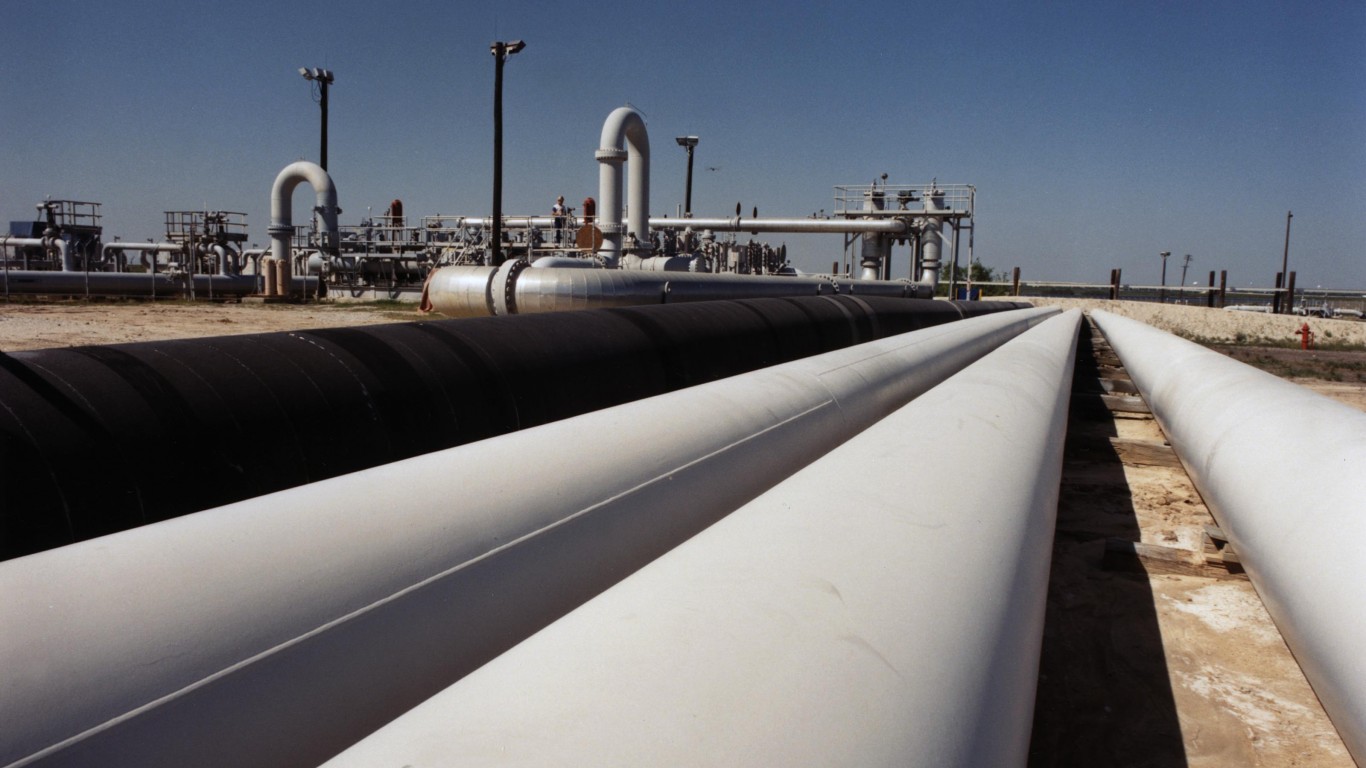

Premarket action on Wednesday had the three major U.S. indexes trading higher. The Dow Jones industrials were up 0.38%, the S&P 500 up 0.33% and the Nasdaq 0.17% higher.
West Texas Intermediate (WTI) crude oil has been trading below $75 a barrel for two weeks now. Early Wednesday morning, WTI was trading at around $71 a barrel. That price is below the top end of the range that the U.S. Department of Energy (DoE) has set as the price at which the federal government will begin to refill the country’s Strategic Petroleum Reserve (SPR).
The SPR’s capacity is more than 700 million barrels, and as of early May, the reserve had a total of 462.6 million barrels in storage. The DoE on Monday issued an order to purchase 3 million barrels for the SPR, provided that the price is within or below its specified purchase range of $67 to $72. As we pointed out at the time, this marks the first time that the U.S. government has guaranteed a price floor for crude. It was a big deal.
Perhaps more interesting in this case is the request for proposal (RFP) that DoE issued Monday. The 3 million barrels it plans to purchase must be U.S.-produced sour crude. Most of the oil produced onshore in this country is light, sweet WTI crude. The sour stuff, known as Mars crude, is mostly produced from offshore wells in the U.S. Gulf of Mexico.
Because it takes more time and specialized equipment to refine sour crude, Mars crude is typically cheaper than WTI. Currently, the two are trading within $0.50 of each other, and sour crude headed for Europe and elsewhere traded at a premium of around $1.60 a barrel compared to WTI on Monday.
One final note. In the first decade of the 21st century, U.S. refiners began modifying their plants, at a cost of billions of dollars, to accept more sour crude than the WTI they had originally been built to process. Everyone believed the world had reached “peak oil,” a point at which global crude production would begin declining. Then the fracking boom hit, and peak oil fears more or less disappeared. But demand for sour crude went up, and Mexican production, the primary U.S. supplier of sour crude, began to slip.
In order to keep U.S. refineries from having to spend even more billions to return to the status quo ante, it makes sense to rebuild the SPR’s sour stockpiles if the price gets low enough. But a 3-million-barrel purchase is not going to make much difference. According to the RFP, DoE wants to buy the oil in the month of August. Right now, the WTI futures contract for August delivery trades at around $71 a barrel, within pennies of the June contract. The December contract trades at a little over $69.
After U.S. markets closed Wednesday, the American Petroleum Institute (API) reported that U.S. commercial stockpiles of crude rose by 3.7 million barrels last week. After markets open Wednesday, the U.S. Energy Information Administration (EIA) is expected to report that crude inventories rose by less than 2 million barrels last week.
Shareholders of Tesla Inc. (NASDAQ: TSLA) got an earful at Tuesday’s annual meeting. The big news, which came after the meeting ended, was that CEO Elon Musk told CNBC that the company is going to give advertising a try. The stock rose 2% on Wednesday and traded up another 1.5% in Wednesday’s premarket session. Twitter’s incoming CEO, Linda Yaccarino, is a veteran of the advertising wars, and it may be that her hiring was a signal not only that Tesla would spend some ad dollars on the social media site, but also do more advertising in other media.
Tesla has never needed advertising. Word of mouth from fanboy to fanboy has always been enough. But competition in the EV space is picking up, especially from the big Chinese companies, like BYD and Geeley, that have been in the game nearly as long as Tesla has. The seemingly constant vehicle price changes that Tesla has initiated since the beginning of the year have only a limited value. Buyers can always wait to find out if the price will drop before placing their order. That is not good for the top line. Can advertising fix that? Tesla is about to find out.
Here is a look at how the markets fared on Tuesday.
Nine of 11 market sectors closed lower on Tuesday. Real estate (−2.61%) and energy (−2.54%) had the day’s worst losses. Communications services (0.59%) and technology (0.16%) posted the day’s only gains. The Dow closed 1.01% lower, the S&P 500 down 0.64% and the Nasdaq down 0.18%.
Two-year Treasuries added seven basis points to end Tuesday at 4.06%, and 10-year notes rose by four basis points to close at 3.54%. In Wednesday’s premarket, two-year notes were trading at around 4.08% and 10-year notes at about 3.53%.
Sponsored: Find a Qualified Financial Advisor
Finding a qualified financial advisor doesn’t have to be hard. SmartAsset’s free tool matches you with up to 3 fiduciary financial advisors in your area in 5 minutes. Each advisor has been vetted by SmartAsset and is held to a fiduciary standard to act in your best interests. If you’re ready to be matched with local advisors that can help you achieve your financial goals, get started now.
Thank you for reading! Have some feedback for us?
Contact the 24/7 Wall St. editorial team.
 24/7 Wall St.
24/7 Wall St.


